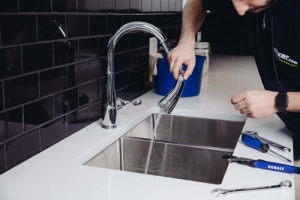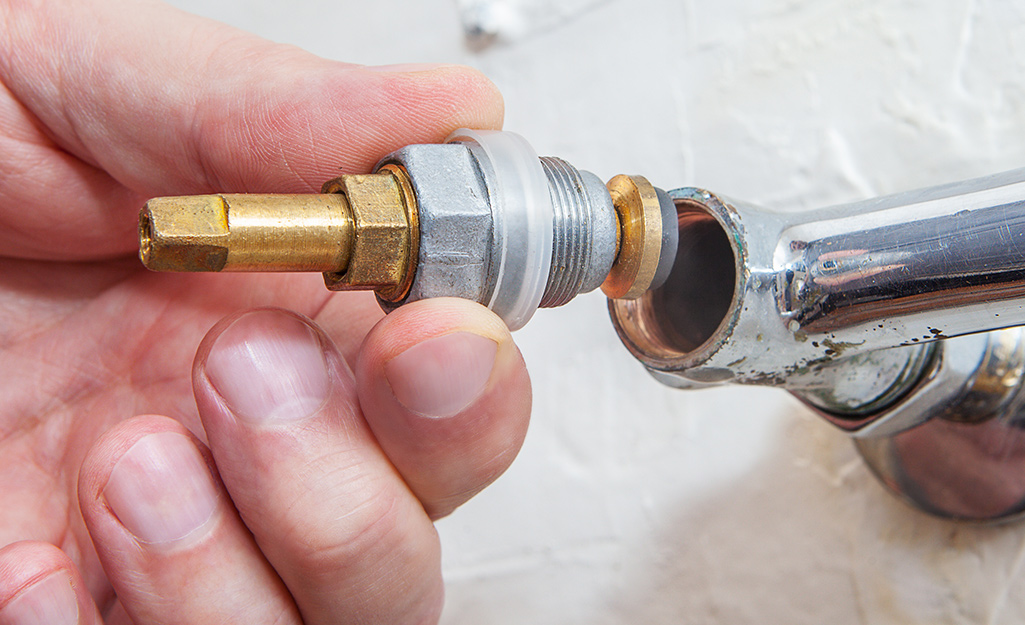How It's Critical to Mend a Faulty Faucet
How It's Critical to Mend a Faulty Faucet
Blog Article
We have stumbled upon this article relating to How to Fix a Dripping or Leaky Faucet directly below on the web and accepted it made sense to relate it with you on this site.

Leaking taps may appear like a minor trouble, but their effect surpasses just the nuisance of the sound. From wasting water to sustaining unneeded financial expenses and health and wellness threats, disregarding a leaking faucet can bring about different consequences. In this short article, we'll look into why it's important to address this usual family concern promptly and successfully.
Wastefulness of Water
Ecological Influence
Dripping faucets contribute substantially to water wastefulness. According to the Epa (EPA), a single tap dripping at one drip per second can squander more than 3,000 gallons of water each year. This not just pressures water sources yet also affects communities and wildlife based on them.
Step-by-Step Guide to Repairing a Dripping Faucet
Tools Needed
Prior to attempting to take care of a dripping tap, gather the necessary tools, consisting of an adjustable wrench, screwdrivers, replacement components (such as washers or cartridges), and plumber's tape.
Usual Faucet Issues and Their Solutions
Determine the kind of faucet and the certain concern creating the drip. Typical troubles consist of damaged washers, rusty valve seats, or damaged O-rings. Describe supplier guidelines or on-line tutorials for detailed support on fixings.
Financial Prices
Increased Water Bills
Past the ecological effect, dripping taps can blow up water expenses significantly. The built up wastage over time translates right into greater utility expenditures, which might have been avoided with prompt repair services.
Prospective Residential Property Damages
In addition, long term leaking can result in harm to components and surfaces bordering the faucet. Water accumulation can trigger staining, deterioration, and even architectural problems if left unattended, causing extra repair work expenses.
Health Worries
Mold and Mold Growth
The continuous visibility of wetness from a dripping faucet develops an excellent atmosphere for mold and mildew and mildew development. These fungis not only endanger indoor air top quality but likewise pose health and wellness threats, especially for people with respiratory system conditions or allergic reactions.
Waterborne Conditions
Stagnant water in leaking taps can come to be a breeding ground for germs and various other pathogens, boosting the threat of waterborne diseases. Pollutants such as Legionella microorganisms thrive in stagnant water, possibly bring about serious diseases when consumed or breathed in.
Do it yourself vs. Professional Repair service
Pros and Cons of DIY Repair Work
While some might try to deal with a dripping faucet themselves, DIY repair work include their own set of difficulties. Without correct expertise and devices, do it yourself efforts can aggravate the concern or lead to insufficient repairs, extending the problem.
Benefits of Employing an Expert Plumber
Employing an expert plumber makes sure that the underlying cause of the trickling tap is resolved properly. Plumbers have the expertise and tools to detect and fix faucet issues successfully, conserving time and lessening the danger of additional damage.
Environmental Duty
Private Contribution to Conservation
Taking duty for dealing with leaking faucets straightens with wider efforts towards water preservation and environmental sustainability. Every individual's activities collectively make a significant influence on protecting precious sources.
Sustainable Living Practices
By prioritizing punctual repairs and taking on water-saving routines, individuals add to lasting living techniques that benefit both existing and future generations.
Preventive Measures
Routine Upkeep Tips
To avoid dripping taps, carry out regular upkeep such as cleaning up aerators, checking for leaks, and replacing worn-out components without delay. Furthermore, consider setting up water-saving devices or updating to more reliable fixtures.
Value of Prompt Repairs
Resolving leaking taps as soon as they're observed avoids more water wastage and possible damage, inevitably saving both water and money in the future.
Impact on Property Value
Understanding of Well-Maintained Building
Preserving a home in good condition, including resolving upkeep issues like leaking taps, enhances its viewed value and worth amongst potential purchasers or occupants.
Impact on Resale Worth
Residences with well-kept plumbing components, consisting of taps, command greater resale values in the realty market. Attending to dripping faucets can contribute to a positive impact during building assessments and settlements.
Verdict
Dealing with a leaking tap goes beyond mere convenience; it's an important step toward conserving water, lowering economic prices, and guarding wellness and building. Whether via DIY repair services or expert help, doing something about it to take care of dripping faucets is a tiny yet impactful means to promote responsible stewardship of resources and contribute to a healthier, a lot more sustainable future.
Most Common Reasons for a Leaky Faucet and How to Stop the Drip
Whether it’s your kitchen faucet leaking or a bathroom faucet leaking, one leaky faucet can waste anywhere from three to 30 gallons of water every single day. If the constant drip-drip-drip doesn’t get your attention, your water bill will. The good news is that, by following a few simple steps, chances are pretty good you can fix the problem yourself.
Why is it dripping?
Before you start taking things apart, let’s break down some of the most common causes of a leaky faucet.
Bad O-ring.
A cartridge is a valve that controls the flow of water into the faucet spout. On cartridge faucets there’s an O-ring—the little disc attached to the stem screw that holds the faucet handle in place. If it’s loose or worn-out, it can cause your sink handle to leak. Of course, the cartridge itself could be worn out. If that’s the case, make sure you replace it with the exact same kind.
Corroded valve seat.
The valve seat connects the faucet and the spout. If the leak seems to be coming from the spout, it might be because a buildup of water sediment has corroded the valve seat.
Worn-out washers or seals.
A leaky spout could be caused by a bad washer that rests against the valve seat. It’s just a matter of time before friction takes its toll. It could also be the wrong size washer or one that’s been installed incorrectly. Water sediments can also corrode inlet and outlet seals.
Water pressure.
If the faucet only drips now and then, or when you turn the handles a certain way, you should probably check your home’s water pressure.
Loose or broken parts.
The adjusting ring and packing nuts in the stream screw can become loose over time, causing your sink handle to leak. Try tightening or replacing the packing nut. If the leak is coming from the pipes underneath the sink, you probably have a broken pipe or fitting. If that’s the case, you should definitely call a plumber.
Know your faucet.
Faucets come in a variety of types. Each one has its own assembly—and its own possible causes of leaks. Learning about the four most common kinds of faucets will help you know how to take them apart and make any repairs.
How to stop a leaky faucet
Fixing that leaky faucet doesn’t have to take a lot of time, money, or expertise. It’s usually a simple matter of replacing a worn-out washer or gasket, a loose O ring, or another part. Chances are really good you can do this yourself if you follow these simple steps.
Shut off the water.
Before you tackle the faucet, cut off the water supply to the sink. There should be one valve for hot and one for cold. Hand-turn them clockwise with your hands till they close. If there are no valves under the sink, head to the basement and shut off the main water supply to the house. Then turn on the faucet until it empties out the water that’s still in the line and you’re ready to start. It’s a good idea to cover the sink drain with a plug or a rag so you don’t lose any small pieces and parts while you’re working.

Do you enjoy reading up on Why Is It Important To Fix Your Leaking Tap/Faucet?? Place feedback directly below. We'd be delighted to find out your views about this post. Hoping that you visit us again in the future. Loved our blog? Please quickly share it. Help other people find it. Thank you so much for your time spent reading it.
Report this page